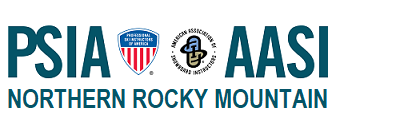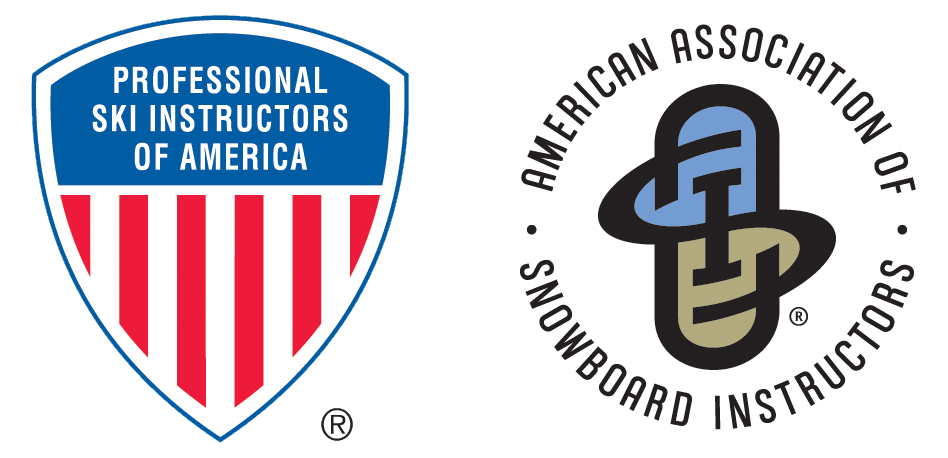PSIA-NRM & Intermountain Level II Telemark Skiing Assessment Activities
Candidates will be asked to perform a variety of activities and free runs on a variety of terrain appropriate for this certification level, and candidates may be asked to do so in a variety of formats i.e. call down, pairs skiing, line rotation, etc. Candidates should be prepared to ski any of the activities listed below. Candidates may be asked to try activities not listed for additional verification of ownership of fundamental skills for Telemark skiing.
Guided practice of these activities enhances the broad and refined skill base necessary to ski at the Level II Telemark National Standard.
Assessment Activities
Integrated:
Wedge Turns, Wedge Christies, Basic Parallel, Basic Telemark
Versatility:
Short Radius turns, Medium Radius turns, Bumps
Individual:
Railroad Tracks – On groomed beginner terrain. The skis are tipped into corresponding edges using an appropriate combination of inclination and angulation resulting in two defined arcs in the snow with minimal to no skidding. Vary lead change in order to demonstrate parallel/alpine relationship and telemark relationship. Alpine Railroad track
Monomarks – On groomed intermediate terrain. Skis maintain a parallel relationship while maintaining one telemark stance while skiing a defined turn shape. Monomark 1, Monomark 2
Pivot Slips – On groomed intermediate terrain. Skis are rotated under the feet (or between two feet in a telemark stance) into and out of the fall line in a pivoted motion. The skis are tipped and pressure to allow the skis to slip laterally down the fall line minimizing horizontal travel. Vary lead change in order to demonstrate parallel/alpine relationship and telemark relationship.Telemark Pivot Slips, Alpine Pivot Slips
Shuffle Turns – Skis are shuffled fore/aft from one telemark stance to the next while traveling through a series of defined turn sizes.
Outside Ski Turns – On groomed green or blue terrain. The Skier performs a series of defined radius turns while lifting the inside ski off the snow. The inside ski should be lifted immediately following the edge change and right before the skier enters the fall line. The ski should remain off the snow through the turn completion. A pole swing should be used to complement movements of the body, but the inside (uphill) pole should not be used to maintain balance. Watch for the lifted ski to be carried either level or weightless tip down but not tip up. Outside Ski Turns 1, Outside Ski Turns 2
Skating – On groomed green terrain. The skier performs forward-oriented diverging skates. The skier has a stable engaged ski to move from when the skating step takes place. The skis are in a diverging relationship when the skating step takes place. The skier’s center of mass should be kept up with their base of support. Watch for the lifted ski to be carried either level or weightless tip down but not tip up. Skating 1, Skating 2, Skating 3, Skating 4
Hockey Stops – On blue or groomed black terrain. The skier starts in a straight run, then quickly pivots the skis across the fall line coming to an edge set stop in a corridor with a complementing pole plant. The task should be done in both directions with both telemark lead change and without (alpine). Hockey Stop Alpine
Dead Stop Telemark – On green terrain. Skis come to a complete stop between turns. Edges flatten and release evenly to allow the skis to remain flat and pivot in a parallel relationship.
Basic Leapers – On groomed blue terrain. The skier performs medium-radius turns at a moderate speed that begins with a hop. Edge Changes take place in the air and speed is controlled with turn shape. The center of mass remains over the feet when the skier leaves and lands on the snow; both skis come off the snow simultaneously; leg rotation shapes the turns; turn shape controls the speed. Demonstrate alpine and telemark leapers as defined. Leaper Alpine

